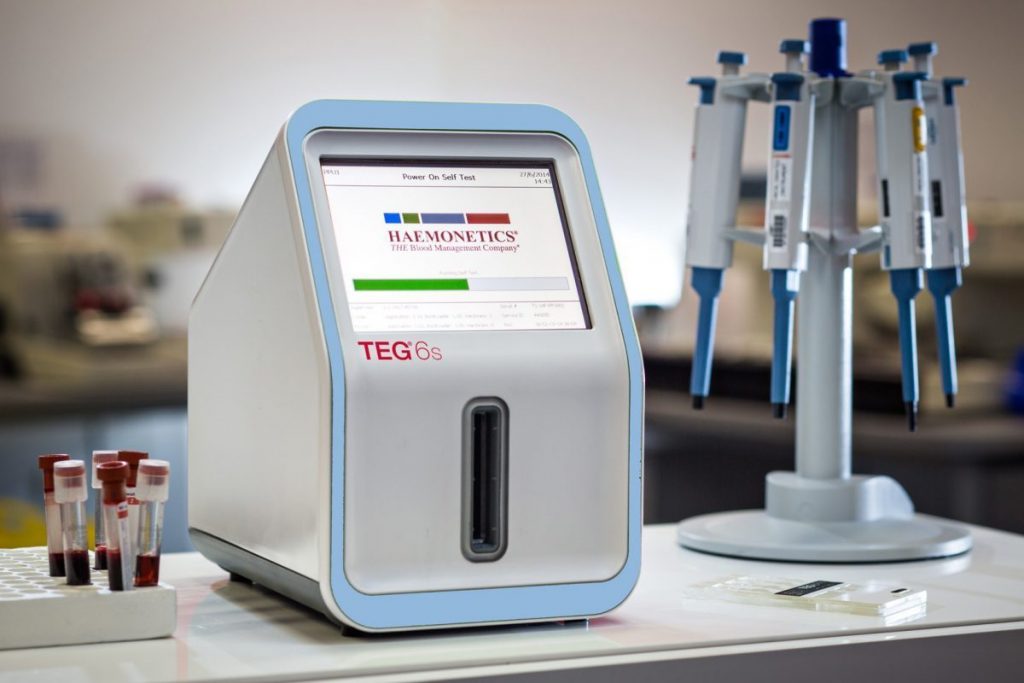Clinical Utility of the Quantra® Point‐of‐care Haemostasis Analyser During Urgent Cardiac Surgery

Coagulopathic bleeding during and after cardiac surgery is associated with increased morbidity and mortality. Viscoelastic testing is increasingly used instead of laboratory testing. Our aim was to compare a new viscoelastic point‐of‐care device, the Quantra® System, with thromboelastography and standard laboratory testing. After ethical approval and with written informed consent, we prospectively recruited adult patients undergoing urgent cardiac surgery at increased risk of bleeding. Clot time and clot stiffness values were compared before, during and after cardiopulmonary bypass. We prospectively recruited 52 patients, of whom 34 (65%) were transfused with red blood cells. Our usual transfusion thresholds for fibrinogen (1.5 g.l−1), platelets (100,000.μl−1), prothrombin time (20 s), activated partial thromboplastin time (48 s) and maximum amplitude on thromboelastography (50 mm) corresponded to Quantra values of fibrinogen clot stiffness 2.0 hPa, platelet clot stiffness 13.5 hPa, clot time 159 s, clot time 183 s and clot stiffness 17.0 hPa, respectively. These Quantra thresholds showed high negative predictive value for low platelets (platelet clot stiffness, 97.4%), prolonged activated partial thromboplastin time (clot time, 92.6%) and reduced maximum amplitude on thromboelastography (clot stiffness, 93.6%). The Quantra predicted clinical need for transfusion of platelets (area under the curve 0.71, p = 0.001) but all tests performed poorly at predicting the need for fresh frozen plasma transfusion. We have shown that point‐of‐care testing using the novel Quantra system provides useful data for guiding transfusion management.
